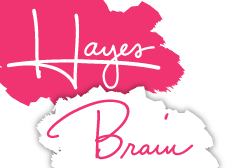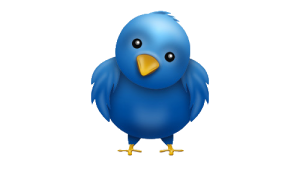I’ve worked with over 100 clients in some capacity that involves Twitter. The work has fallen into 3 categories: Twitter as part of their overall marketing strategy, training on how to use Twitter and “correcting” errors previously made in using Twitter. Clients have included corporations, small & medium-sized businesses, non-profits, professionals and a few well-known individuals.
It’s really easy to work with an organization or individual not already on Twitter. There’s no “unlearning” that needs to be done. It’s a different story when that organization or individual has already been using Twitter in ways that are not following best practices or that is not appropriate for their situation.
I want to share with you the top 10 mistakes I see made. Hopefully, whether you are new or old to Twitter, you will gain some insight.
Mistake #1: Focusing on quantity over quality
As of writing this, I am at over 120,000 followers. To some people this is an impressive number. However many people are unaware of the fact that it took me 3 years to get to this level. Unless you are a household name or a company that already has a solid fan base, it is very difficult to try and build a following at a rapid pace while developing relationships. You’d be better off having 1,000 followers you communicate with and who can help you get the word out than you are to have 10,000 followers who have no idea who you are.
Mistake #2: Not having a defined strategy
Why are you on Twitter? What is your objective? Is how you are using Twitter meeting this objective? What can you be doing differently in order to reach your goals faster or more efficiently? From working with clients and discussions with Twitter users, I’ve discovered the most costly mistake most are making is not having a defined strategy never mind a game plan they are following that ensures the strategy is implemented.
Mistake #3: Not understanding reciprocity of follows
If you are a regular Joe Blow who is using Twitter to simply network and socialize, reciprocity is probably not an issue. However, if you are a company, non-profit or an individual who is trying to build a fan base, reciprocity is almost a must in my opinion. Reciprocity is important for psychological reasons. It leaves people with this nice cozy feeling that they matter to you and your organization. It is an easy, cost-free way to bond. Isn’t that what social media is about?
If you are an individual marketer, guru, expert or whatnot, I believe that reciprocity is even more crucial. There’s been a huge trend on Twitter for individuals to proactively build up large followings and then to purge most of those they follow. Some people refer to this as “Pump and dump.” Blog post after blog post have been written by those who have done it explaining the reasons why. There is no reason not to reciprocate under your primary account – especially now with Twitter lists & Tweetdeck/other software allowing the use of multiple accounts.
I’m not advocating following back every single follow. I am suggesting that to gain the maximum benefit from your usage of Twitter to not have a limiting follow-back policy.
Mistake #4: Not engaging & sharing
The best way to show how this can be a mistake is by sharing an example. I’ve worked recently with a client who had an established presence on Twitter. They had several thousand tweets. Every single tweet had been either company announcements or links to their site. They brought me in to consult because they rarely get any click-throughs on their links and in spite of having over 10,000 followers, Twitter has done nothing to help their bottom line.
By simply starting to interact with followers who send replies and passing along information in their industry from other Twitter users in a matter of a few weeks, they started to see 200+ visitors a day from Twitter, retweets of their links (which they had not seen before) and other great stuff happening. They are spending the same amount of time on Twitter as they had been – they have simply had a shift in focus to broadcasting/self-promoting to engaging and sharing and the results are paying off.
Mistake #5: A bio with spelling mistakes
The in’s and out’s of an appropriate bio would take a full blog post (or two) to cover. The one simple thing you can do to enhance your credibility is to make sure your bio has no spelling mistakes. I did a random check of my last 20 “real” followers and 20 corporate Twitter accounts I am familiar with. Of the 20 “real” followers, 6 had either spelling or grammatical errors that were glaringly obvious. Of the 20 corporate Twitter accounts, 3 had spelling mistakes or grammatical errors.
Mistake #6: Not being careful of your last tweet
Most people will tweet in set time intervals. Often there will be many hours – or sometimes even days – between tweets. The last tweet you make should be done with at least a little bit of thought. Why? For two reasons: 1. It will help you get more of the right kind of followers. The last tweet of accounts show in following lists and on various sites and 2. When people go through their own following list to decide whether or not to unfollow, your last tweet could impact their decision. What the last tweet should be depends on your overall Twitter strategy.
Mistake #7: Not using keywords
Many people find Twitter accounts to follow by conducting keyword searches – both with and without the hashtag. What are the keywords for your business/organization? Are you using them in your tweets? When communicating with others, are you using the proper terminology that people would use when conducting searches? Do you have any kind of schedule for rotating keyword usage in tweets? I am not advocating keyword spamming but ensuring you actually are using terms relevant to your business. Note: I’ve often seen a single tweet bring in 10-20 followers alone because of using keywords. Do that once a day and that is an extra 300-600 targeted followers per month.
Mistake #8: Not having any kind of monitoring in place
Are you watching Twitter for mentions of your company, your name, your brand(s), your competitor(s), etc? I routinely mention specific brand names and companies in tweets with comments. I’m amazed how many go ignored. When mentions are positive, it’s great to reinforce a customer/client. When mentions are negative, it can be dealt with and be turned into a positive for your company. Again, dealing with explaining monitoring would take at least a blog post or two to cover – but if you aren’t doing any kind of monitoring, find out how to do it and start to do it.
Mistake #9: Trying to sell directly on Twitter
Yes, mentioning a special in tweets to your followers, new products, etc is okay – as long as it is not all you are doing. However, where a lot of people go wrong is by employing monitoring methods to essentially spam people via tweets. I’ve even seen large companies do this. Sure, engaging people that mention your company or the industry it deals in is okay. Answering questions is okay. But avoid trying to use Twitter for a direct pitch without establishing a connection with someone first.
Mistake #10: Leaving personality at the door
Twitter IS social media. Even if you manage a Twitter account for a Fortune 500 company, showing some personality is a part of engagement and building a rapport with followers. If you have multiple people handling a Twitter account, then have the pictures of those that tweet in the background of your profile page. Have them sign off their tweets with their initials at the end so they have a chance to show their personality. Instead of having your Twitter link go to your company’s main page, have it go to a special page so that people can find out more about those tweeting for the account. McDonald’s has set up a great page.
If you have a small business, showing your personality is even more important. You want to build a rapport with your followers. Just make sure what you do is always consistent with how you want your brand/image to be perceived!
Mistake #11: Not responding to tweets
I truly believe you are better off not having a Twitter account unless you are ready and willing to devote the time and resources necessary to respond to tweets. I’ve had at least a half a dozen instances where I’ve tweeted companies (who were showing tweets) about business issues and failed to get any kind of response.
If you are going to have a presence on Twitter, it’s important to consider that Twitter is a communications channel. Just as you’d not leave your primary company telephone number go to voice mail all day without anyone returning calls, tweets should not be left unanswered.
Mistake #12: Absentee-tweeting
Of everything I’ve shared so far, this is probably the most controversial. I really don’t believe that automating tweets is a bad idea. Now, I’m not adverse to scheduling tweets so that they are staggered over time. For heavier Twitter users, this will make it a lot easier on their followers.
But having tweets go out when no one is around to respond to them is a different story. Absentee-tweeting is not a good thing. Let me give you an example: let’s say you have a scheduled tweet go out regarding a contest you are running. Some people who click on the link get a warning from their anti-virus program there is a problem. They tweet you about it. No response. Your account continues to send out tweets. Meanwhile, over 20 people have tweeted you reporting there is an issue. Think this can’t happen? This did to a company I worked with who had been previously advised to use scheduled tweets.
I hope this gave you some ideas on how to make Twitter better work for your business.
Did I miss anything? What mistakes do you see businesses making or have you made?


